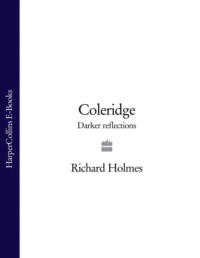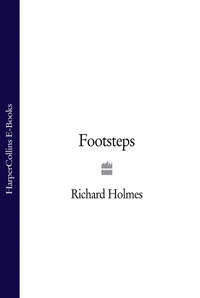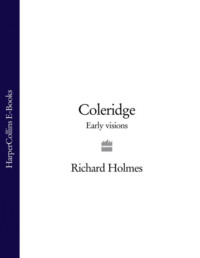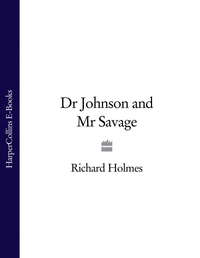
Полная версия
Sidetracks
In these letters there is only one reference to Rowley (though several to St Mary Redcliff). It is an odd one. It shows that Rowley was on his mind, but it appears to be bidding him farewell as a companion. ‘As to Mr Barrett, Mr Catcott, Mr Burgum, &c., they rate literary lumber so low, that I believe an author, in their estimation, must be poor indeed! But here matters are otherwise; had Rowley been a Londoner, instead of Bristowyan, I could have lived by copying his works.’ In his characteristically ambiguous manner, Chatterton appears to be wondering if Rowley could in fact be turned into a Londoner: whether Rowley could survive outside the environment of medieval Bristol which created him, and could perhaps expand into more universal themes that would move far beyond the old localized settings. This is exactly what ‘The Balade of Charitie’ did do: there is no other Rowley poem with a more timeless setting and theme, and no other Rowley poem which has so finely absorbed the humane and observant style of Chaucer. The idea was to mature until July; a powerful island of calm amid Chatterton’s turmoil and uncertainty and distress.
Some time in June Chatterton left Shoreditch, and moved to the cheaper and seedier area of Holborn. He took an attic room in the second house along Brooke Street from the High Holborn end. It was an area of disrepute. Labourers from Ireland, criminals and prostitutes lived there. It was the home of the Cato Street conspiracy. Clergymen when they visited their flock in these streets were accompanied by bodyguards. Chatterton’s landlady was a Mrs Angel, a dressmaker. Dressmaking in that area was often synonymous with brothel keeping. Round the corner in Fox Court was where Richard Savage was born. Mr Cross kept his chemist shop on the corner. Even nowadays, with the pink neo-gothic edifice of the Prudential Insurance Building looming respectably along the right-hand side of the road, it is not a comforting street to be in. You cannot see enough sky.
In June the letters quickly began to get shorter. The one to his sister, dated June 19th, begins with a sudden sharpness. ‘Dear Sister, I have a horrid cold. – The relation of the manner of my catching it may give you more pleasure than the circumstance itself.’ His story tells of hanging out of his window in the middle of the night to listen to a drunken woman singing bawdy songs in the street below. It ends with a conclusion that seems, in the context, to have a fairly obvious double meaning. ‘However, my entertainment, though sweet enough in itself, has a dish of sour sauce served up in it; for I have a most horrible wheezing in the throat; but I don’t repent that I have this cold; for there are so many nostrums here, that ‘tis worth a man’s while to get a distemper, he can be cured so cheap.’ The man’s distemper referred to here is almost certainly some form of venereal disease.
Nineteenth-century scholarship has been prudishly silent on this point. As it was silent on Keats dosing himself with mercury for the same complaint. Not until Meyerstein’s book of 1930 was there any consideration of the likelihood that Chatterton might have caught venereal disease; although it was a very common and rather unremarkable fact of a young man’s life in the London of the time. Indeed, in the London of any young man’s time since Shakespeare. The matter would be quite insignificant if it were not for the entirely different light that it throws on the development of Chatterton’s drug-taking, and most important of all, in the actual circumstances of his death. There is only one authentic reference in this matter. It comes from Michael Lort, that shrewd scholar-investigator who had extracted a particularly interesting statement from the Reverend Catcott (see supra, p. 38), and whose manners were, according to Fanny Burney, ‘somewhat blunt and odd’. Michael Lort’s evidence is simply this: that he had cross-questioned the chemist Mr Cross, and ‘Mr Cross says he (Chatterton) had the Foul Disease which he would cure himself and had calomel and vitriol of Cross for that purpose. Who cautioned him against the too free use of these.’ It is tremendously significant. Chatterton ‘would cure himself’ – of course, that is in character. We know that Chatterton was fascinated by medical matters and had in the past borrowed many books on surgery from Barrett. He would look after himself; his pride, his hardness would demand it. Yet suppose things did not go quite according to plan? Suppose the disease, whatever its form, at first seemed merely to get worse; or suppose it disappeared and then recurred – which is often the case? Vitriol could be a long and very painful treatment, especially for someone of Chatterton’s age and in his difficult circumstances.
The crucial fact is, then, this: arsenic, in small regulated doses, could also be used as a more drastic cure for venereal disease; and opium could – rashly but understandably – be used as a pain-killer. Arsenic and opium simultaneously. The Coroner reported arsenic poisoning; Barrett the surgeon recorded evidence of opium, he assumed an overdose. If all these facts are true, then an entirely different picture begins to emerge. One is led to ask, is the tradition of 200 years quite wrong? Is this a case of suicide at all? Why, come to think of it, should Chatterton have left no suicide note, no Villonesque Last Will and Testament? (The only extant ‘Will’, as we have seen, was made four months previously, a device for escaping from Lambert’s.) Is it not possible, is it not really rather likely, that what happened on the night of the 24th of August was a tragic mistake, a terrible miscalculation? In fact did Chatterton ever surrender to his circumstances, to himself, to the soft Romantic gesture of Wallis’s painting? Did his angry courage ever break at all? These are difficult questions to answer. We may never have the evidence to answer them satisfactorily. The ambivalence may have gone with him into oblivion. But I think his death was a mistake.
If the inner life is doubtful to the end, Herbert Croft, the author of Love and Madness, discovered some vivid external impressions from his interviews with Chatterton’s last neighbours. The house where Chatterton lodged in Shoreditch was run by a plasterer and his wife, Mr and Mrs Walmsley. With them were two young relatives, a niece and a nephew. Also Mrs Ballance, whose acquaintance we have already made. After Mrs Ballance’s faux pas over ‘Tommy’, little seems to have passed between them. But Mrs Ballance had something to say about that silence too. ‘He would often look steadfastly in a person’s face, without speaking, or seeming to see the person, for a quarter of an hour or more, till it was quite frightful; during all this time (she supposes, from what she has since heard), his thoughts were gone about something else.’
The master of the household, Mr Walmsley, was less forthcoming. Yet a perfectly ordinary artisan’s opinion of a young poet who was to become the darling of the Romantics is not without what one might call sociological interest. ‘Mr Walmsley saw nothing of him, but that there was something manly and pleasing about him, and that he did not dislike the wenches.’ Chatterton would probably have been rather pleased with that description.
Mrs Walmsley, like all London landladies that ever were and ever will be, looked out for the more domestic virtues in her lodger; but was not without a streak of romance sweetly disguised in the depth of a doubtless ample bosom. She liked her young literary gentleman to have a bit of style. ‘Mrs Walmsley’s account is, that she never saw any harm of him – that he never mislisted her [“misled” her perhaps; or perhaps “mistressed” her?]; but was always very civil, whenever they met in the house by accident – that he would never suffer the room, in which he used to read and write, to be swept, because, he said, poets hated brooms.’ That seems rather to have tickled Mrs Walmsley, but she was certainly not going to admit it: ‘she told him she did not know any thing that poet folks were good for, but to sit in a dirty cap and gown in a garret, and at last to be starved.’ Secretly she may have even approved. ‘During the nine weeks he was at her house, he never stayed out after the family hours, except once, when he didn’t come home all night and had been, she heard, poeting a song about the streets.’ At which point Mrs Ballance rushes back into the breach to cover up for poor Tommy. ‘This night, Mrs Ballance says, she knows he lodged at a relation’s, because Mr W’s house was shut up when he came home.’
But that is only what the adults saw. Mrs Walmsley’s niece kept her eyes much wider open, and took something of a fancy to him; but she was puzzled by him, even slightly alarmed: ‘For her part, she always took him more for a mad boy than anything else, he would have such flights and vagaries – that, but for his face and her knowledge of his age, she should never have thought him a boy, he was so manly, and so much himself – that no women came after him, nor did she know of any connexion; but still, that he was a sad rake, and terribly fond of women, and would sometimes be saucy to her.’ His eating arrangements were peculiar too: ‘he ate what he chose to have with his relation (Mrs B) who lodged in the same house, but he never touched meat, and drank only water, and seemed to live on air.’ To that the nephew added: ‘he lived chiefly on a bit of bread, or a tart, and some water.’
The nephew, whose name Herbert Croft does not record, was probably the youngest in the house, younger even than Chatterton. For the first six weeks of Chatterton’s stay he shared a bedroom with him. ‘He used to sit up almost all the night, reading and writing … he (the nephew) was afraid to lie with him; for to be sure, he was a spirit, and never slept … he never came to bed till very late, sometimes three or four o’clock, and was always awake when he (the nephew) waked; and got up at the same time, about five or six – that almost every morning the floor was covered with pieces of paper not so big as sixpences, into which he had torn what he had been writing before he came to bed.’
The detail of the torn paper is interesting. It harks back to the Pyle Street schoolhouse where papers and parchments were scattered on tables and floors; it carries forward to the final scene in Brooke Street where the shredded papers were wrongly taken as evidence of a fit of despair. And it suggests so strongly and simply the immense inwardness and privacy which the act of composition, divided between himself and Rowley, had always contained for Chatterton: something so secretive it made him cover his tracks instinctively.
He gave no reason for quitting Shoreditch. ‘They found the floor of his rooms covered with little pieces of paper, the remains of his poetings, as they term it.’
In Brooke Street the track does run out. Croft never managed to trace Mrs Angel, his dress-making landlady. A certain Mrs Wolfe, a barber’s wife, who lived a few doors down, remembered one detail. ‘Mrs Angel told her, after his death, that, as she knew he had not eaten anything for two or three days, she begged he would take some dinner with her on the 24th of August; but he was offended at her expressions, which seemed to hint he was in want, and assured her he was not hungry.’ Somehow it rings true – one imagines how he would take offence. The other stories sound a bit like ingenious apocrypha. He was seen in a tavern drinking Shakespeare’s health in bad wine; he was seen in St Pancras churchyard reading the epitaphs; he was seen at the Brooke Street’s bakers being refused bread on tick.
Yet there is a grim and miraculous concordance between these final marginalia of his outward life, and the last and loveliest of Rowley’s visitations, ‘The Excelente Balade of Charitie’. In thirteen vivid and melodic stanzas, it tells of a poor ‘hapless pilgrim’ who has fallen on bad times and is now sick, poverty-stricken and destitute, his clothes threadbare and his body ravaged. He stands alone in a wide unlocated landscape, with a dark ponderous storm moving over the horizon towards him. ‘He had no housen theere, ne any convent nie.’ He shelters under a holm-oak. The storm breaks.
Liste! now the thunder’s rattling clymmynge sound
Cheves slowlie on, and then embollen clangs
Shakes the hie spyre, and losst, dispended, drown’d,
Still on the gallard eare of terrour hanges;
The windes are up; the lofty elmen swanges,
Agayn the levynne and the thunder poures,
And the full clouds are braste attenes in stonen showers.
By using the Rowley dialect and spelling with a wild freedom he had never before achieved, Chatterton here brings off one of the finest pieces of onomatopoeic poetry in the whole of English verse. It is quite unnecessary to know semantically what ‘clymmynge’ or ‘swangen’ mean; the sound, even the very look of the words tell you exactly what is happening, the power and terror of the storm.
The portrait of the pilgrim as he huddles under the oak is superb. It glows with a kind of transcendental pity for all men who are outcast or broken. It is almost as if Rowley were describing Chatterton in a vision of his own; as if the roles had been reversed:
Look in his glommed face: his sprighte there scanne;
Howe woe-be-gone, howe withered, forwynd, deade!
Haste to thy church-glebe-house, ashrewd manne!
Haste to thy kiste, thy only dortoure bedde.
Cold, as the clay which will gre on thy hedde,
Is Charitie and Love among high elves:
Knightis and Barons live for pleasure and themselves.
[A few words are difficult here, but not very: ‘forwynd’ means sapless; ‘ashrewd’ means cursed by fortune; ‘kiste’ is a coffin; and ‘dortoure’ is obviously a dormitory or bedroom.]
A figure now appears through the blasting storm, ‘spurreynge his palfry oer the watery plain’. It is an Abbott, and he is described with Chaucerian accuracy and judgement: ‘His cope was all of Lincoln clothe so fine, with a gold button fastened neere his chynne’, and his horse’s head has been plaited with roses. The pilgrim begs for aid, the Abbott – with the solemn inevitability of the medieval ballad – rudely refuses him. (‘Varlet, replied the Abbatte, cease your dinne; This is no season almes and prayers to give; My porter never lets a faitour [tramp] in.’) And he spurs away.
The storm breaks out with renewed ferocity. But through the downpour ‘faste reyneynge oer the plain a priest was seen’. This man is a poor friar, ‘Ne dighte full proude, ne buttoned up in golde; His cope and jape [gown] were gray, and eke were clene’. The pilgrim begs for alms; the friar immediately produces a silver groat from his pouch. ‘The mister pilgrim did for halline [joy] shake.’ Then with a marvellous unexpected gesture of generosity, the friar gives his cloak to the pilgrim. ‘Here take my semicope, thou arte bare I see; Tis thyne, the Seynctes will give me my reward.’ He disappears into the rain.
It is difficult to get out of one’s head the impression that Chatterton is in some primary symbolic sense that ‘unhailie pilgrim’; and the friar in grey who appears out of the storm and so freely gives aid is Thomas Rowley. Perhaps it makes no sense. But in this last known work, maybe precisely because it is the last known work, the figures move through the simple heraldic ritual of charity with a power much greater than their own individual humanity. The storm against them is all storms; it is the storm of circumstance, the storm of the mind, the storm of the body; it is the storm of passion, of creativity, of ambition, of loneliness. But there is no final despair; help comes, life is made out. There is no despair at Pyle Street, or at Colston Hall, or at Lambert’s drudging office; there is no despair at Shoreditch, or at Brooke Street in the attic.
Above all, the poet did not despair in the attic.
INTRODUCTION
SO CHATTERTON gallantly passed me on to Shelley. For four years I was immersed in the travelling, dreaming and writing of his biography (as I have recounted in Footsteps). But once I had finished, or at least survived the book, every instinct told me to get away from London. I took the ferry to Calais in the winter of 1974. I remained in France on and off for two years, writing articles and reviews in a little attic room in the ninth arrondissement of Paris, at 9 rue Condorcet (not far from the boulevard Montmartre and the Marché Cadet) which is glimpsed in various disguises in the pieces of this section. I would walk down at night, in those pre-fax days, to mail my articles express (the magic dark blue sticker) back to London from the all-night Bureau de Poste near the Bourse. I was still lonely here, but I got to know Paris, the Île de France, and Normandy, and had my own romantic adventures which I now think left their shadow, or perfume, on these pieces.
But what I was looking for was the next subject, something which would take me directly into the heart of French Romanticism, among a later and very different group of artists and writers. Within a few months, I thought I had found it. What I had discovered was the great portrait collection of the nineteenth-century French photographer, Felix Nadar, in the Bibliothèque Nationale, which was then in the rue Richelieu, with its old pen-umbrous reading-room lit by green glass reading lamps at each desk. As I imply in this first piece, it seemed that Nadar would provide a wonderful opportunity for a biographic ensemble, the study of a whole Romantic generation, something extraverted and flashlit, full of melodrama and gaiety and humour.
But quite unexpectedly, my researches drew me in another direction. I came across a series of striking studio portraits of two literary colleagues, the journalist Théophile Gautier and the poet Gérard de Nerval. These men had been friends since childhood, attending the Lycée Charlemagne together in the boulevard Saint-Antoine in the 1820s, growing up as youthful disciples of Victor Hugo, and both making brilliant but very different careers in the Paris of Louis-Philippe, the 1848 insurrection, and the Second Empire. Outwardly, Gautier’s career was a triumph, ending as one of the great established Parisian men of letters: a poet, a highly paid columnist in the newspaper La Presse, an intimate of Flaubert, and patron to Baudelaire who dedicated Les Fleurs du Mal to him.
But Nerval’s life appeared to be a disaster, increasingly rootless and poverty-stricken, ending in a series of internments in an asylum in Passy and eventual suicide in an alley leading down to the river Seine. The stark contrast in their destinies seemed to me to tell an essential story about Romanticism. So I felt my way along the interwoven paths of their biographies, beginning with a first journalistic sketch of Gautier, like a mirror image, visiting London. I then assembled and translated a collection of his autobiographical fantasy tales, My Fantoms, and out of this collection arose the story of ‘Poor Pierrot’. Here was a haunting mythical figure from the Commedia dell’ Arte, who came literally to life in the career of the mime artist Deburau. This Pierrot’s biography had a sadness and sudden violence which foreshadowed Nerval’s.
But when I came directly to Nerval himself, I found the path of traditional biography blocked, for the reasons I have explained in Footsteps. I wrote a 400-page biography of the two friends, ‘Poets in Paris’, but it never cohered and I felt gradually that I was lost in a maze of shifting journeys and identities. I was lost in France. When I came back to England in 1976, all that seemed to remain was a kind of echo-chamber of voices in my head, a kind of fragmented sound-track of their friendship.
As a last effort to record those voices, and at least mark the fading contours of my research before they disappeared entirely, I wrote a radio-play in that odd hybrid but fascinating form of ‘drama-documentary’ which was eventually produced for Radio Three by Hallam Tennyson. (It was a strange production, almost surreal in its unsettling effect on the actors, with Timothy West – a big, solid, confident figure like Gautier – superbly transforming his voice into the slight, unstable, tortured Nerval.) This is the last piece in this section, although the story itself–and my wanderings in France – were far from over. The discovery of radio, as a vehicle for biographical story-telling, moving effortlessly inside and outside its characters’ minds, shifting with magical ease between different times and locations, was a revelation and an inspiration to me.
MONSIEUR NADAR
OPPOSITE THE GOLD AND DORIO of the modern Hôtel Scribe, about three minutes’ walk under the plane trees from the Place de l’Opéra, stands a crazed and yellowing façade of taciturn stucco, surmounted by a triplet of broken urns. This is 35 boulevard des Capucines, Paris 75008. It carries no plaque, no prefectural plate, no memorial. Yet there was a time when Victor Hugo, exiled in the Channel Islands, could have a letter delivered to this address with nothing more than the proprietor’s name on the envelope.
A hundred years ago, the building was red: a bright, republican red. Its top two floors consisted of studio rooms into which the morning sun poured unhindered, by a daring system of plate-glass windows set in a trellis of wrought-iron that curved gracefully across the entire façade. Its corniches were capped by alabaster busts of three generously proportioned Muses, and its roof cluttered by a series of glass sheds, not unlike greenhouses, interspersed somewhat eccentrically by pots of ferns and small Christmas trees in tubs. At pavement level, a constant coming and going of hired cabs and smart landaus, a dashing of commissionaires with giant parasols (also red), of strollers and gapers – les flâneurs de Paris – indicated some unusually attractive centre of business, art or scandal.
As night fell, and the street-lamps swaying from their iron gibbets filled the thoroughfare with a garish, orange gaslight, and the cab-lamps jerked down the uncertain asphalting of the boulevard, a great arc of clear white light, the output from fifty Bunsen Static Batteries linked in series, flooded down from the windows of number 35. This unearthly glow was occasionally punctuated by the livid flash from a pan of magnesium, which gave rise – not altogether unreasonably – to rumours of spirit-raising and necromancy.
Across the whole frontage, at the level of the third-storey balcony, in bold cursive lettering 10 feet high and 50 feet long, in a system of gas-tubes designed exclusively by Antoine Lumière, ran the proprietorial name: nadar. That too was in red.
In the 1860s Felix Nadar was certainly the most celebrated photographer in France. In retrospect, his reputation still stands with David Octavius Hill and Julia Margaret Cameron, as one of the three indisputably great portrait photographers of the nineteenth century. His famous atelier at number 35 boulevard des Capucines had long been linked with the pioneering days of French photography, since the time when it had been rented as an undecorated shell of a building, in a then unfashionable quarter, by the early landscape daguerreotypers, the frères Bisson, and the painter turned seascape photographer Gustave Le Gray, in the 1850s. The building was to conclude its controversial associations on a high note, when after the fall of the Second Empire, and the crushing tragedy of the Commune, Nadar moved to smaller premises, and hired the studio out to the ‘Société Anonyme des Artistes Peintres’ for a public exposition which became known to posterity as the First Impressionist Exhibition of 1874.
The aesthetic revolution brought about by the early photographers, and especially Nadar, was no less far-reaching than that achieved by the Impressionists. But the impact of photography on European society was too rapid, and too widespread, to be grasped at the time. The Impressionists asserted new standards of private, idiosyncratic vision, which penetrated only slowly, and among the elite of the art world. But photographers established, in little more than a decade, entirely new and universal ideas about visual reality, and about what everyone could commonly accept and recognize as ‘lifelikeness’. Photography was, from the start, irretrievably popular in its appeal and suspiciously democratic in its tendencies. Not surprisingly it took Paris by storm: in 1850 there were less than a dozen professional studios in the city; by the 1860s something over 200, with more than 33,000 people directly or indirectly employed. Of these, Nadar was the doyen.











